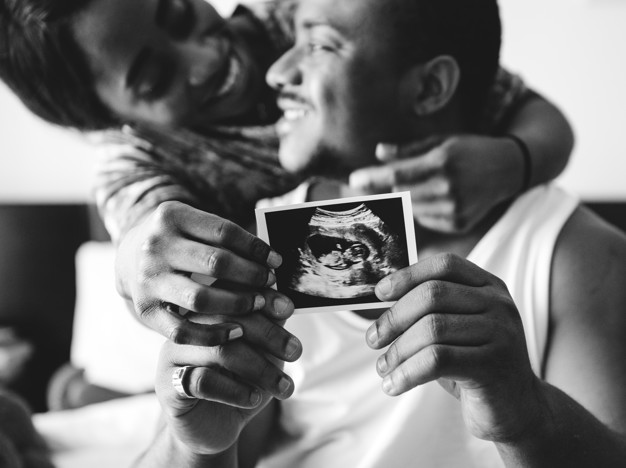
Your pregnancy scans and what to expect
Your pregnancy scans and what to expect.
During your pregnancy you will be offered at least two ultrasound scans, and possibly more. This article and the article in the second trimester section explain what these scans are looking for, and when in your pregnancy you may expect to be offered them. All scans that are offered to you are optional, you can choose to accept or decline any of them, and this information page will give you some information to help you with that decision.
- Dating scan
The first scan that most pregnant women and people will be offered is what’s routinely called the ‘dating scan’. Typically this is somewhere between 10 and 14 weeks of pregnancy, but may happen outside of this time. This scan aims to date the pregnancy, but it can be up to 5 to 7 days wrong either way, meaning it may put you 5 or 7 days further pregnant than you are, or 5 or 7 days less pregnant. If this scan is done after 15 weeks of pregnancy, it’s even less accurate at dating the pregnancy. Although this is called the dating scan, it is also looking at the development of your pregnancy.
Your dating scan is also checking:
- whether you are having more than one baby
- to see where in your womb your baby and placenta are growing
- your baby’s development
If you agree to a ‘dating scan’ an ultrasound will be used to create images of your baby that are visible on an ultrasound screen. This works by sending high-frequency sound waves through your stomach into the womb through a small sound probe also called a transducer. The gel that is placed on your stomach helps the sound waves pass through the skin. The probe collects the sounds that bounce back and the computer turns these sounds into images! They do not use radiation and are thought to be safe in pregnancy.
There are some studies completed, seeing if the baby can hear the soundwaves. In one study they placed a tiny hydrophone (a type of water microphone) into women’s wombs whilst having an ultrasound scan (the women did agree to this!). They found that they were able to pick up sounds that were similar to high pitched piano sounds during the ultrasound scan and also when the probe was directly over the hydrophone the sound levels increased significantly.
There are also some studies that show, ultrasound scanning very slightly heats up the tissues in our body and likely in our baby, although this is not believed to cause any long-term harm. Hence scanning is only recommended when needed.
The sonographer will also take measurements to see how long your baby is. It is thought, that most babies will all be certain lengths during specific weeks of pregnancy, but some do fall outside of this. Just a millimeter difference contributes to the change in your ‘Due Date’. No wonder it is all so confusing if this happens to you!
- Screening for Down Syndrome
As well as estimating how far along your pregnancy is, this scan can also look for physical markers of chromosomal differences including Down Syndrome. For instance, they can look at measurements on the neck which, if of a certain size, can indicate a higher chance of Down Syndrome. This part of the scan is called the nuchal translucency (NT) scan, and the results are combined with other data, including a blood test, to give you an estimate of the overall chance of your baby having a chromosomal difference.

The blood test you will be offered is looking for increased levels of something called pregnancy-associated plasma protein-A (PAPP-A) and human chorionic gonadotropin (free beta-hCG). In pregnancies with Down Syndrome, the PAPP-A levels are low and the hCG and NT levels are raised or higher.
This information is combined with other things, such as your age and then an estimate of the likelihood of having a baby with Down Syndrome is given. It will not be able to tell you for sure whether they do or not, it will just tell you how high or low the chance is.
You can choose to have the dating scan but not have the nuchal translucency test if you prefer, but you will probably need to be very clear about it if this is your decision, as it’s often just done as part of the process.

Leave A Comment